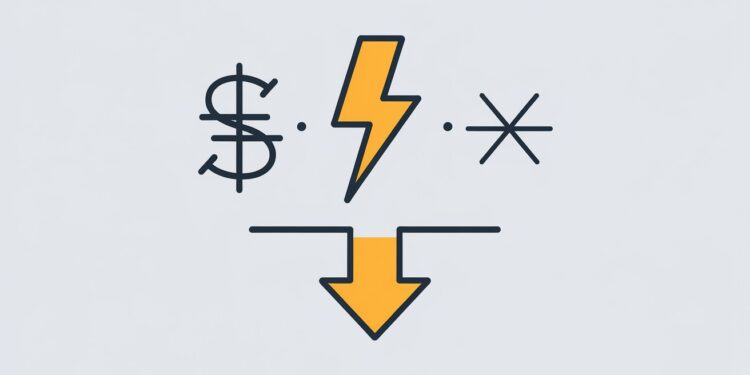As the cost of living continues to rise across Australia, a new report from the nation’s consumer watchdog offers a glimmer of hope for household budgets. The Australian Competition and Consumer Commission (ACCC) has found that electricity prices fell by an average of 4% over the 12 months to August 2024. However, the savings were not enjoyed equally, with nearly half of customers missing out by failing to shop around for better deals.
Millions Overpaying for Power
The ACCC’s energy market analysis revealed that while 5 million households and businesses benefited from the price drop on flat rate plans, a staggering 2.6 million customers were still paying the same or more than the regulator-set default offers. This means that millions of Australians are likely overpaying for their electricity by hundreds of dollars each year.
ACCC Commissioner Anna Brakey highlighted the issue, stating:
If you haven’t changed electricity plans in the past 12 months, chances are you are paying more for your electricity than you need to.
– Anna Brakey, ACCC Commissioner
Easy Savings for Savvy Switchers
The report found that customers who had switched plans within the last year were rewarded with an average saving of $317, equivalent to around one-sixth of their total annual bill. These proactive consumers paid an average of less than $1,800 per year, while those who stayed on the same plan for two years or more were hit with bills of nearly $2,200 on average.
Brakey urged Australians to invest a small amount of time to potentially reap significant savings:
Take some time this holiday period to have a look on the Energy Made Easy or Victoria Energy Compare websites … [or] simply call [your] retailers to see if they have a better offer available.
– Anna Brakey, ACCC Commissioner
Increased Market Competition
The emergence of cheaper electricity plans has been driven by intensifying competition in the energy market. For the first time since 2021, the ACCC noted that more retailers had entered the market than exited it. This competitive pressure has forced providers to sharpen their pencils and offer more attractive deals to win and retain customers.
However, the analysis also showed that only one in five customers in Victoria, New South Wales, South-East Queensland and South Australia were on their retailer’s best offer between January and August. This suggests that many households are not taking full advantage of the competitive deals available.
Future Price Outlook
Looking ahead, the ACCC report indicated that while retail electricity costs had risen by around 25% on average across the National Energy Market in 2023-24, prices were predicted to stabilize or even fall further in 2024-25. This forecast provides some welcome relief for households grappling with broader cost of living pressures.
Additionally, government rebates and subsidies, which were not factored into the ACCC’s analysis, have further eased the burden of energy bills. These support measures have contributed to an additional 20% reduction in electricity costs in the year to September.
Fuel Costs Also Easing
In more positive news for consumers, the ACCC report coincided with a pullback in petrol prices across Australia’s capital cities in the second half of 2024. According to data from motoring group NRMA, the average price of regular unleaded fell to 188.5 cents per litre in 2024, down from 189.7 cents the previous year.
Prices were lower again in Perth, dropping from 183.8 to 181.4 cents per liter, while Canberra overtook Brisbane as the most expensive capital city at 196.3 cents per liter. The NRMA calculated that the difference of 13.5 cents per liter between the cheapest and most expensive cities equated to an annual saving of $426 at the bowser for a typical family.
Inflation Easing But Challenges Remain
The combination of falling electricity and fuel costs helped to drive down headline inflation to a three-year low in the September quarter. The federal government has signaled that it expects these deflationary forces to continue into the new year. This may reduce pressure on the Reserve Bank of Australia to further hike interest rates when it meets again in February.
However, with many Australians still paying well over the odds for their energy, and wage growth remaining subdued, the overall cost of living is likely to remain a pressing challenge for many households in 2025. Only by staying vigilant to price changes and being willing to switch providers will consumers be able to harness the benefits of competition and minimize their expenses in an inflationary environment.
By following the ACCC’s advice and regularly checking for better electricity deals, millions of Australians have the opportunity to start the new year with a little more breathing room in their budgets. Even small savings can add up over time and every dollar counts when it comes to managing the cost of living. As the saying goes, take care of the pennies, and the pounds will take care of themselves.








